#oolongtea
Text
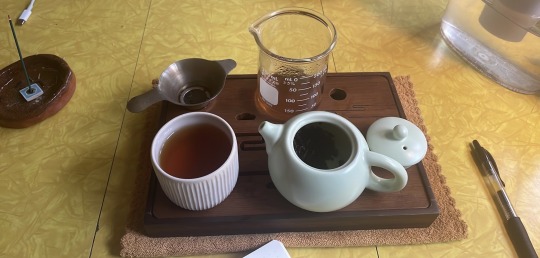
the last of the red water shuixian :(
it made today a bit better
my take on song tea is that their recommended brewing parameters are not very good. you’re better off using more tea and starting off with less brew time. i brewed it my way (~9g for 150ml starting with 30 seconds) and its really tasty and fragrant
4 notes
·
View notes
Text

#A Cup of Tea#萊卡#taiwan#台灣#leica50mmf1#coffeeshop#m10r#竹北#leicam10r#50mmf1#jeanliphotography1003851jpg#tea#teacup#teashop#院子#茶店#喝茶#oolongtea#烏龍茶
26 notes
·
View notes
Text
Do it by yourself and enjoy the fun!
#diy#morimatea#teapot#teacup#teatray#teatime#tea#beautiful#teajelly#fruitjelly#summerstyle#cute#cool#fresh fruit#freshtea#delicate#oolongtea#lychee#grape#glasspot#glassware#enjoyable#fashionista#interesting#refreshing#fascinating#charmedlife#teaforlife#peace#slowlife
5 notes
·
View notes
Text
Tasting: Yu Lan Xiang Dan Cong Oolong
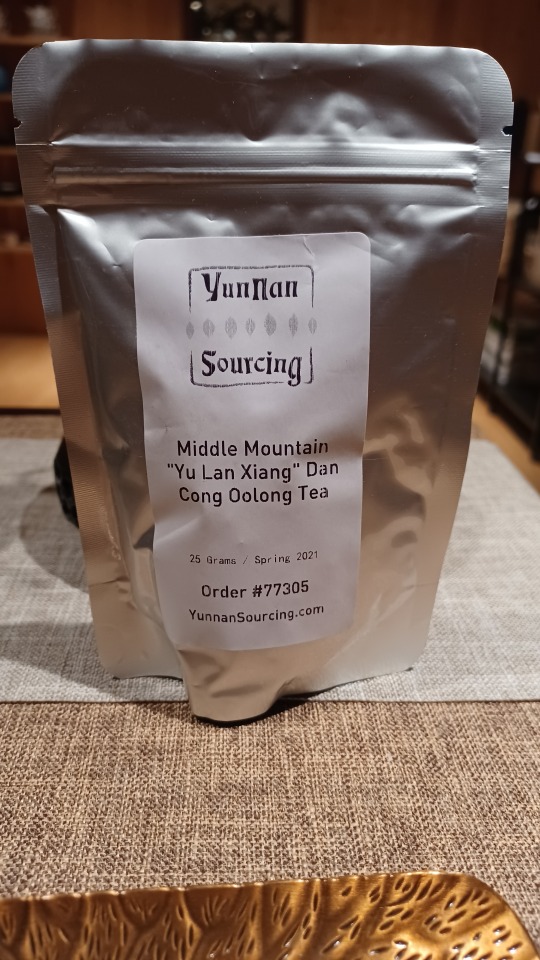
Back with another Dan Cong from last year’s stash! This time I’m tasting, Yu Lan Xaing, which translates to “Magnolia Aroma. While the majority of the Dan Cong’s I purchased were from a spring harvest, this particular one comes from the November winter harvest. While there is no doubt that spring harvest teas deliver the best product, winter harvest teas can also produce amazing tea, and in my opinion, they are quite too commonly overlooked. In fact, and a side by side tasting I did last year of the same tea of the same year, but two different harvests really showed not only the differences between the two harvests, but also just how tasty winter harvest teas can be.
The dry leaf has an immediate fresh type of aroma. Almost like the smell of spring air when the flowers are in bloom. I detected a slightly vegetal aroma which I don’t find too often on Dan Cong teas. Also found it to have a subtle tart fruity notes that reminded me of plum sauce. The floral notes I would normally expect came out of the wet leaf. A heavy floral melody of flowery potpourri, orchids and the expected scent of magnolia. The strength of the floral notes were very similar to a the strong perfume of a flower scented shampoo or hand cream. I detected the plum note again, as well as the vegetal note I found on the dry leaf.
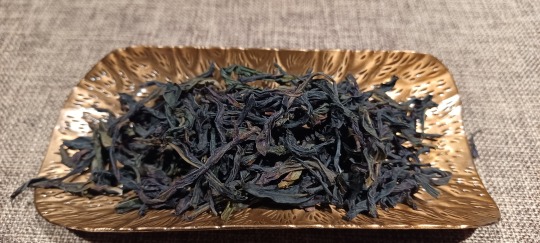
It was on the brew that the vegetal notes I had been detecting finally came. An odd flavor to find on a Dan Cong, when compared to the much more usually fruity flavors. The tea has a thick body, with a warm buttery mouthfeel, followed by a sweet corn like vegetal flavor. It has a hint of magnolia floral notes and a soft and subtle fruity finish. The second infusion was a bit sweeter, but still very buttery and creamy, with less of the vegetal flavor and a strong presence of aromatic magnolia. By the 4th infusion, the brew was dominated by the magnolia and flowery perfume, with the buttery and vegetal notes having disappeared, but remained quite creamy.
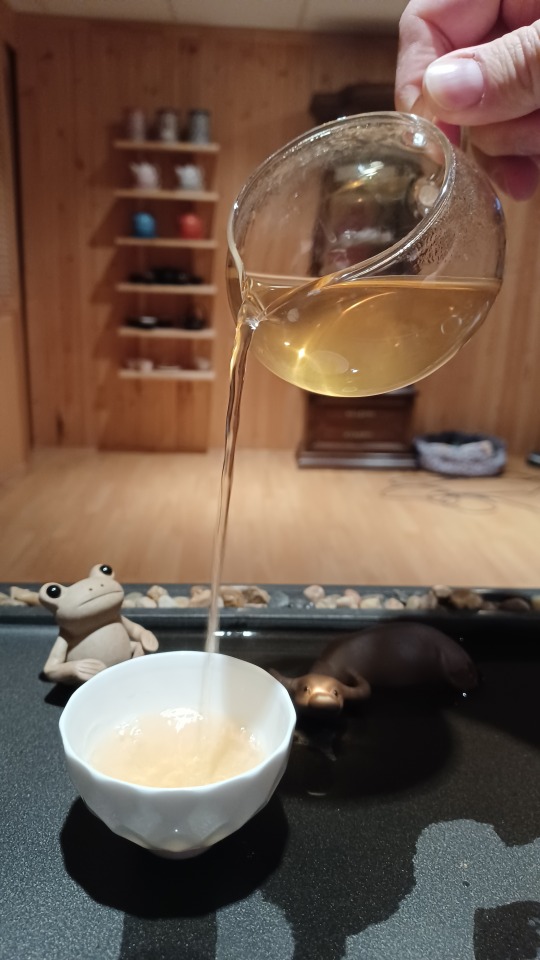
This winter harvest tea brought many different aspects of Dan Cong’s I had yet to experience. I was a little put off by the vegetal flavors, but learned to appreciate them in this form. While this tea isn’t the best Dan Cong I’ve had so far, it’s nowhere near being the worst. It’s got great flavor and a strong aroma with unique characteristics, but ultimately, it’s not one I want to keep around full time. However, I will enjoy what I have while it lasts.
3 out of 5 stars.
#dancong#dancongoolong#jadeoolong#oolongtea#tea#loosetea#yunnan#yunnansourcing#magnolia#aroma#floral#vegetal#fruity#winterharvest#winter#spring#springharvest#wintertea#springtea#teablr
11 notes
·
View notes
Photo
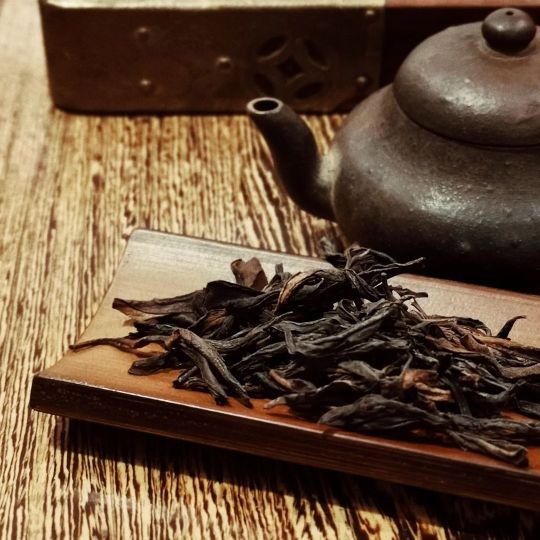
Because of the cold weather, I haven't made oolong tea for a while. Today I made a pot of old Dan Cong for my old friends Douglas and Luke. #oolong #oolongtea #wulongtea #dancong #phoenixoolong #songzhong #darkoolong #teashopvancouver #chineseteashop #teavancouver #teatime #friendship #gongfucha #kongfutea #teaculture (at The Chinese Tea Shop) https://www.instagram.com/p/Cm0OuFyLLJ7/?igshid=NGJjMDIxMWI=
#oolong#oolongtea#wulongtea#dancong#phoenixoolong#songzhong#darkoolong#teashopvancouver#chineseteashop#teavancouver#teatime#friendship#gongfucha#kongfutea#teaculture
2 notes
·
View notes
Photo

Best congee in town! 😋👌🏾 #shilinrestaurant #congee #chinesefood #shiaolongbao #braisedbeefnoodlesoup #shrimpfriedrice #brocolli #oolongtea #circuitmakati #yummy #foodporn #eatsmorefuninthephilippines #shilinrestaurant (at Shin Lin Circuit Makati) https://www.instagram.com/p/CgUFiMsLFmI/?igshid=NGJjMDIxMWI=
#shilinrestaurant#congee#chinesefood#shiaolongbao#braisedbeefnoodlesoup#shrimpfriedrice#brocolli#oolongtea#circuitmakati#yummy#foodporn#eatsmorefuninthephilippines
4 notes
·
View notes
Photo

It came in an eight gram tin so pretty that I want to scrub the sticker off and save it for a century. Gaiwan hot to the touch. Put the leaves in. Shake, agitate, lift the lid. Inhale. Drink every last drop of the rinse feeling greedy. Round one. Round two. Rich iron red hue. Spent a couple hours over video and audio with the gentle souls who source this tea and live this life and breathe it. “Divine” I think I called it. And was immediately corrected. Nothing divine about it, she said. This tea is all about this earth. Truth. With the charcoal from the wood. With the hand of master teachers. Supervision ever present. Ever vigilant. Trees on barren cliffs, reaching skyward With the roots of what we source in direct opposition. The tin is black empty. The leaves are almost spent. The sensation in my body The buzzing on my tongue The sweetness in my throat The euphoric sense of peace Warm belly Flushed cheeks And Memories of plums plucked at peak ripeness. Almost as if we were doing gravity a favor. 2017 Old Bush Shui Xian from @shiftingsenses ———————————————— #yancha #rockoolong #oolong #oolongtea #oolongcha #wuyioolong #justinotherteablog #oolongaddict #gongfucha #gongfu #gongfutea #gongfuteaware #gaiwan #gongdaobei #teawares #teawareaddict #teaporn #gushu #teajournal #chaxi #chaqi #chado #cha #teadrunk #teasession #teameditation #tealover #teastagram (at On the Rocks) https://www.instagram.com/p/CgNgUiqOCzD/?igshid=NGJjMDIxMWI=
#yancha#rockoolong#oolong#oolongtea#oolongcha#wuyioolong#justinotherteablog#oolongaddict#gongfucha#gongfu#gongfutea#gongfuteaware#gaiwan#gongdaobei#teawares#teawareaddict#teaporn#gushu#teajournal#chaxi#chaqi#chado#cha#teadrunk#teasession#teameditation#tealover#teastagram
2 notes
·
View notes
Text
What are the benefits of Darjeeling white tea?
Discover the health wonders of Darjeeling tea! Packed with antioxidants like catechins, it promotes heart health, fights bad breath, and may lower blood pressure. With potential benefits against cancer and liver disease, our premium Darjeeling tea offers a flavorful way to uplift your well-being naturally.

#best online tea store#herbal teas#buy tea online#whitetea#greentea#blacktea#tea#teatime#looseleaftea#tealover#herbaltea#oolongtea#wholeleaftea#tealovers#teaaddict#chinesetea#marylandtea#teaislife#wellness#teaparty#teaknowledge#health#smallbusiness#ilovetea#premiumlooseleaf#teaholic#tealife#instatea#bmoretea#puerh
0 notes
Video
youtube
The Oolong Odyssey: A Journey into Wellness
0 notes
Text

"Steeping life's moments in the warmth of Rooibos tranquility. Sip, savor, and let the calm infuse your journey. 🍵✨
To shop, Please Visit
www.greneraorganics.in
WhatsApp - 99449 97512
#NaturalHealth#WellnessJourney#moringaBenefits#grenera#greneraorganics#organicfarming#nature#moringa#RooibosMoments#TeaLover#rooibostea#rooibos#tea#teatime#blacktea#greentea#herbaltea#tealovers#oolongtea#teaaddict#looseleaftea#ilovetea#whitetea#ay#tealove#teablogger#teaoftheday#puerh#teasofinstagram
0 notes
Text


Red water shuixian !!!
(drinking more song tea)
2 notes
·
View notes
Text
The Ultimate Loose Leaf Tea Showdown: Taste Test Time!
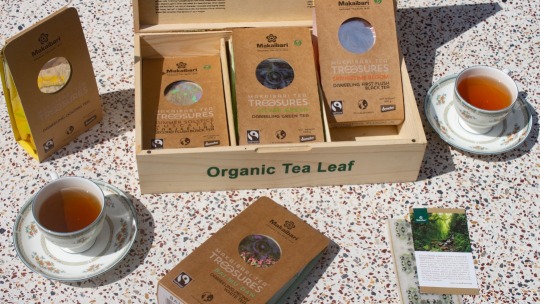
In the world of premium loose leaf tea, the choices seem endless. Whether you're an avid tea connoisseur or just starting your journey into the world of loose leaf teas, you've likely encountered a variety of options. Today, we're diving headfirst into the realm of loose leaf tea, exploring its diverse offerings and conducting the ultimate taste test. Among the contenders, the esteemed brand Makaibari will be our guide through the flavors of loose leaf green tea, loose leaf black tea, loose leaf white tea, and loose leaf oolong tea.
Loose Leaf Tea: A World of Options
Before we get to the exciting taste test, let's briefly introduce the four main types of loose leaf tea we'll be comparing.
Loose Leaf Green Tea: Known for its grassy, vegetal notes and rich antioxidant content, loose leaf green tea offers a refreshing and invigorating experience. The leaves are minimally processed, preserving their vibrant green color and natural flavors.
Loose Leaf Black Tea: This is the classic "cup of tea" for many. With its robust flavor and bold character, loose leaf black tea is known for its depth and versatility. It's often enjoyed with a touch of milk and sugar.
Loose Leaf White Tea: Delicate and subtle, loose leaf white tea is the least processed of all tea types. It boasts a light, ethereal flavor profile, often with notes of honey and floral undertones.
Loose Leaf Oolong Tea: Falling somewhere between green and black tea, loose leaf oolong tea offers a unique fusion of flavors. Its semi-oxidized leaves produce a diverse range of aromas, from fruity to woody, making it a true adventure for the palate.
Makaibari: Your Guide to Excellence
As we embark on this taste test journey, it's essential to have a trusted companion. Makaibari, a renowned tea brand with a rich history, will be our guide through the world of loose leaf tea.
Makaibari is known for its commitment to sustainable and ethical tea production. Their tea gardens in Darjeeling, India, have been producing exceptional teas for over a century. The brand's dedication to quality, environmental conservation, and fair labor practices makes it a standout choice for tea enthusiasts worldwide.
The Taste Test
Our taste test begins with Makaibari's offerings in each category:
Makaibari Loose Leaf Green Tea: Upon steeping, the vibrant green leaves release a fresh and grassy aroma. The first sip reveals a crisp, clean taste with a hint of sweetness. This green tea is a delightful balance of vegetal notes and natural sweetness, showcasing Makaibari's dedication to excellence.
Makaibari Loose Leaf Black Tea: The dark, twisted leaves of Makaibari's black tea brew into a robust, full-bodied cup. You'll encounter bold flavors with hints of malt and a pleasant astringency. It's a classic representation of high-quality black tea.
Makaibari Loose Leaf White Tea: Makaibari's white tea unfolds into a delicate and aromatic infusion. The light, honeyed notes are accompanied by a subtle floral fragrance, showcasing the brand's mastery in preserving the purity of white tea.
Makaibari Loose Leaf Oolong Tea: The semi-oxidized leaves of Makaibari's oolong tea offer a complex flavor profile. You'll experience a dance of fruity and woody notes, making it a fascinating choice for those seeking adventure in every cup.
In conclusion, our taste test journey through the world of loose leaf tea, guided by Makaibari, has revealed the diversity and excellence that this brand brings to each category. Whether you prefer the refreshing qualities of green tea, the robustness of black tea, the delicacy of white tea, or the complexity of oolong tea, Makaibari has something exceptional to offer.
Now, it's your turn to embark on your tea adventure. Explore the world of loose leaf tea, savor the flavors, and let Makaibari be your trusted companion in the delightful journey of tea exploration. Enjoy the ultimate loose leaf tea showdown, one cup at a time!
0 notes
Video
youtube
DXN Lion's Mane Oocha: Maláj kínai süngombás Oolong tea angol módra 😊 (D...
#kávékirály#dxntermékek#dxn#dxnlionsmaneoocha#oolongtea#dxnlionsmanetea#dxntea#gyógygombástea#oroszlánsörénygomba#süngomba
0 notes
Link
Enjoy This Wild Berry Oolong Sweet Tea - THM FP - All Day Sipper
#food#recipes#beverages#applecidervinegar#wildberrytea#oolongtea#oolong#baboabpowder#baobab#acv#healthydrinks#fuelpull#fp#thmsipper#sipper#trimhealthymama#thm
1 note
·
View note
Text
Oolong tea is a type of tea made from the leaves of the Camellia sinensis plant. It has become increasingly popular due to its potential health benefits, such as weight loss and improved heart health. However, like with any food or drink, it is important to be aware of any potential side effects it may have. In this article, we will discuss the possible side effects of oolong tea and how to reduce your risk.The most common side effects of oolong tea include nausea, vomiting, constipation, and increased urination. It may also cause headaches, dizziness, and insomnia. In rare cases, serious allergic reactions can occur. Some people may experience heartburn or stomach discomfort when consuming oolong tea. Additionally, drinking too much oolong tea may lead to a caffeine overdose and its associated symptoms.
Potential Health Benefits of Oolong Tea
Oolong tea is a traditional Chinese beverage that has become popular around the world. It has been consumed for centuries and is known for its health benefits. Studies have shown that oolong tea can help improve cardiovascular health, aid in weight loss, reduce the risk of cancer, and even improve mental alertness. Below are some of the potential health benefits of drinking oolong tea.
One of the most significant potential health benefits of oolong tea is its ability to improve cardiovascular health. Studies have shown that drinking oolong tea on a regular basis can reduce cholesterol levels and decrease inflammation in the body, both of which can help protect against heart disease. Additionally, oolong tea contains antioxidants that can help fight off free radicals and protect your cells from damage.
Another potential benefit of oolong tea is its ability to aid in weight loss. Studies have found that drinking oolong tea regularly can increase metabolism and aid in burning fat more efficiently. The polyphenols found in oolong tea also help to suppress appetite and reduce cravings for unhealthy foods, making it easier to maintain a healthy weight. Additionally, studies have found that consuming oolong tea regularly can help reduce abdominal fat, which may lead to improved overall health.
Oolong tea also has anti-cancer properties that may help to reduce the risk of certain types of cancers. The antioxidants found in this type of tea may help protect cells from damage associated with cancer-causing agents such as UV radiation or toxins found in the environment. Additionally, studies have shown that consuming this type of tea regularly may be associated with lower risks of developing certain types of cancers such as stomach cancer or breast cancer.
Finally, another potential benefit associated with oolong tea is its ability to improve mental alertness and focus. This type of tea contains caffeine which helps stimulate your brain and improve cognitive functions such as concentration and alertness. Additionally, it contains L-theanine which helps relax your mind while still providing you with an energy boost without feeling jittery or anxious.
In conclusion, there are many potential benefits associated with drinking oolong tea on a regular basis including improved cardiovascular health, aiding in weight loss, reducing the risk of cancer, and improving mental alertness and focus. While more research needs to be done to fully understand these potential benefits, current evidence suggests there are some real advantages associated with consuming this traditional Chinese beverage on a regular basis.
Caffeine Content of Oolong Tea
Oolong tea is known for its mild flavor and health benefits. It’s often used to aid digestion, reduce stress, and improve overall health. But, it’s important to be aware of the caffeine content in oolong tea. Caffeine can have some negative effects if consumed in large amounts.
The amount of caffeine in oolong tea can vary depending on the type and quality of the tea leaves. Generally, oolong tea has a lower caffeine content than black or green tea. A cup of oolong tea can range from 12-55 milligrams of caffeine per 8 ounces.
The average cup contains around 25 milligrams of caffeine, which is about half the amount found in a cup of coffee.
It’s possible to reduce the amount of caffeine in your cup of oolong tea by using less tea leaves or steeping it for a shorter amount of time. You can also opt for decaffeinated varieties which have had most or all of their caffeine removed during processing. This is done by steaming the leaves with carbon dioxide or by using a solvent such as ethyl acetate or methylene chloride to extract the caffeine from the leaves.
For those looking for a way to get their daily dose of antioxidants without having too much caffeine, oolong tea is a great option. It has many health benefits and is low in calories and sugar-free! With its mild flavor and unique aroma, it’s no wonder why so many people are turning to oolong as an alternative to coffee and other caffeinated beverages.
Overall, while there are some slight variations in the amount of caffeine per cup, oolong generally has less than other teas such as black or green teas. By selecting decaffeinated varieties or drinking smaller amounts you can enjoy all that oolong has to offer without having too much caffeine!
How Much Caffeine is in Oolong Tea?
Oolong tea contains varying levels of caffeine, depending on how it is processed. Generally, oolong tea has a lower caffeine content than black tea or green tea. On average, oolong teas contain between 12-55 milligrams of caffeine per 8 ounces cup. This range can vary greatly depending on the specific type of oolong tea and its growing conditions. Many factors can influence the amount of caffeine in oolong tea such as the age and quality of the leaves, how long it was steeped, and the water temperature used to brew it. The longer you steep the leaves, the more caffeine is released into your cup. Therefore, if you are looking for a lower caffeine option, you should opt for shorter steeping times when brewing your cup of oolong tea.
The best way to determine how much caffeine is in your cup of oolong tea is to experiment with different brewing methods and steep times and see what works best for you. You can also purchase decaffeinated versions of oolong tea if you are looking for a low-caffeine option.
Benefits of Drinking Oolong Tea
Oolong tea is a great way to improve your health and well-being. It is packed with antioxidants, minerals, and vitamins that can help boost your immune system, improve digestion, and reduce stress. The antioxidants in oolong tea can help protect against cell damage from free radicals. Oolong tea also contains polyphenols which are compounds that have anti-inflammatory properties. Studies have shown that drinking oolong tea can help reduce the risk of certain types of cancer and heart disease. Additionally, oolong tea has been shown to lower cholesterol levels and aid in weight loss.
Risks of Drinking Oolong Tea
Although oolong tea has many health benefits, it is important to note that there are also potential risks associated with drinking oolong tea. Caffeine is present in oolong tea, so it may not be suitable for those who are sensitive to caffeine or have high blood pressure. It may also interfere with some medications, so it’s important to talk to a doctor before adding oolong tea into your diet. Additionally, too much oolong tea can lead to excessive dehydration or constipation due to its diuretic properties. Lastly, while some studies show that drinking oolong tea can help reduce the risk of certain diseases, more research is needed before any definitive conclusions can be made.
Possible Side Effects of Consuming Too Much Oolong Tea
Consuming too much oolong tea can lead to several potential side effects. Caffeine in oolong tea can cause nervousness, headaches, irritability, increased heart rate, and insomnia. People with anxiety may find that too much oolong tea worsens their symptoms. Oolong tea also contains tannins which can cause an upset stomach or diarrhea if consumed in large amounts.
Oolong tea also contains oxalates which may increase the risk of kidney stones in some people. People with a history of kidney stones should limit their consumption of oolong tea and other beverages containing oxalates.
Drinking large amounts of oolong tea may also cause iron deficiency anemia due to the tannins binding to the iron and preventing its absorption in the body. Pregnant women should avoid drinking large amounts of oolong tea as it may interfere with the absorption of folic acid, an important nutrient for fetal development. It is best for pregnant women to limit their consumption of oolong tea to no more than one cup per day.
Overall, while consuming moderate amounts of oolong tea can be beneficial to health, it is important to limit its consumption due to potential side effects associated with drinking too much of it. It is recommended that people drink no more than three cups per day and avoid drinking it on an empty stomach as this could increase the risk for potential side effects such as headaches or nausea.
0 notes